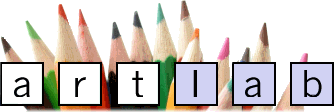|
See davidgauntlett.com for new stuff. |
 |
![]()
VISUALISATION
A short introduction by Jake Peryer
'There is a law in psychology that if you form a picture in your mind of what you would like to be, and you keep and hold that picture there for long enough, you will soon become exactly as you have been thinking'.
William James (1842 - 1910)
Visualisation can be defined as the ability to make images within the mind's eye. We are constantly making pictures in our mind of things that are important to us - our loved ones, our dreams and aspirations, our problems, our studies and people we like or dislike. Visualisation is a natural function of the mind and is the easiest and most automatic thing our mind can do. We can test this very simply: if I say, 'Don't think of a purple elephant with green spots standing on a diving board' you have already created this image in your mind.
The mind's ability to visualise is utilised in a number of different fields such as sports psychology, goal attainment, healing and various types of therapeutic work. However this article will focus upon the applications of visualisation in the fields of creativity and the intellect, and in particular on a number of creative geniuses who used visualisation as a part of their creativity strategy.
The philosopher Bertrand Russell once said, 'It is only through imagination that men become aware of what the world might be'. Imagination, to which Russell reverentially refers, can also be called visualisation. We often think in pictures, just as we dream in pictures, not words, sentences or phrases. We then use words as symbols to enable us to communicate or describe those pictures. Visualisation is the basis of creativity and imagination and many geniuses have attributed their unique creative genius to their visualisation skills.
Albert Einstein claimed that his primary creative thinking process took place through visual imagery, and stated: 'I very rarely think in words at all'. It could be said that it is primarily the image and imagination that guides the innovator to new discoveries.
Take, for instance, the story of Einstein walking in the countryside on a beautiful sunny day. He decided to take a nap on a hillside and as he lay down he closed his eyes and felt the sun's rays against his eyelids. He then imagined that he was sitting on one of these rays of light and that it was travelling out to the far reaches of the universe. But something interesting happened - he found that eventually he returned to the place where he had started. This visual construct gave Einstein inspiration enough to arrive at the postulate that Space-Time was curved.
So one of the most fundamental discoveries about the operation of our universe came from a man daydreaming in a field. It puts into perspective the way teachers and parents admonish young children for daydreaming in class, and important discoveries may be being wasted through people not paying attention to their own internal visual images.
Here are three examples of the use of visualisation by geniuses:
Albert Einstein
The predominant and most simple explanation of Einstein's creative strategy is that he would create some visual construct or image (as illustrated in the above example) and then, upon playing this through, he would check it with an internal feeling, commonly referred to as 'gut instinct', which he described as a type of 'knowing' or 'sense that it was right'.
Wolfgang Amadeus Mozart
Widely regarded as one of the great musical geniuses, Mozart possessed what seemed like 'magical' abilities to write music, and a letter he wrote in 1789 offers a clue about the impact of visualisation on his ability to compose. Talking about his composing strategy, Mozart says:
'When I am, as it were, completely myself, entirely alone and of good cheer, my subject enlarges itself, becomes methodised and defined, and the whole, though it be long, stands almost complete and finished in my mind, so that I can survey it, like a fine painting or a beautiful statue, at a glance. Nor do I hear in my imagination the parts successively but I hear them, as it were, all at once. What a delight this is I cannot tell!'
Within this statement lies the creative strategy of Mozart - within his mind there exists a visual and auditory synaesthesia (a spontaneous link between two or more senses). He does not so much hear the music but rather he sees the music. It is also interesting to note that Mozart would not write his music down until he had fully visualised a composition in his mind.
Nicola Tesla
The great Russian scientist invented machines so advanced that even today, over one hundred years after his death, we are still trying to understand some of his inventions. Yet his ideas sprang from an amazing ability to visualise his future creations so completely that he felt they were so real within his imagination that he could almost touch them.
These are just a few examples of the way that geniuses have used visualisation as the primary tool in their creative strategies. Yet it is important to remember that these people are not unique - we all have the ability to develop our own powers of internal visualisation and there are currently a number of tools that can enable anyone to develop their image making skills, such as Neuro-Linguistic Programming (NLP), and Mind Mapping.
![]()
For further information, you can follow these Wikipedia links:
- Nikola Tesla
- Wolfgang Amadeus Mozart
- Albert Einstein
- Neuro-linguistic programming
- Mind mapping
- Visual system
- Visual perception
- Visualization (alternative medicine)
- Visualization (graphic)
![]()
